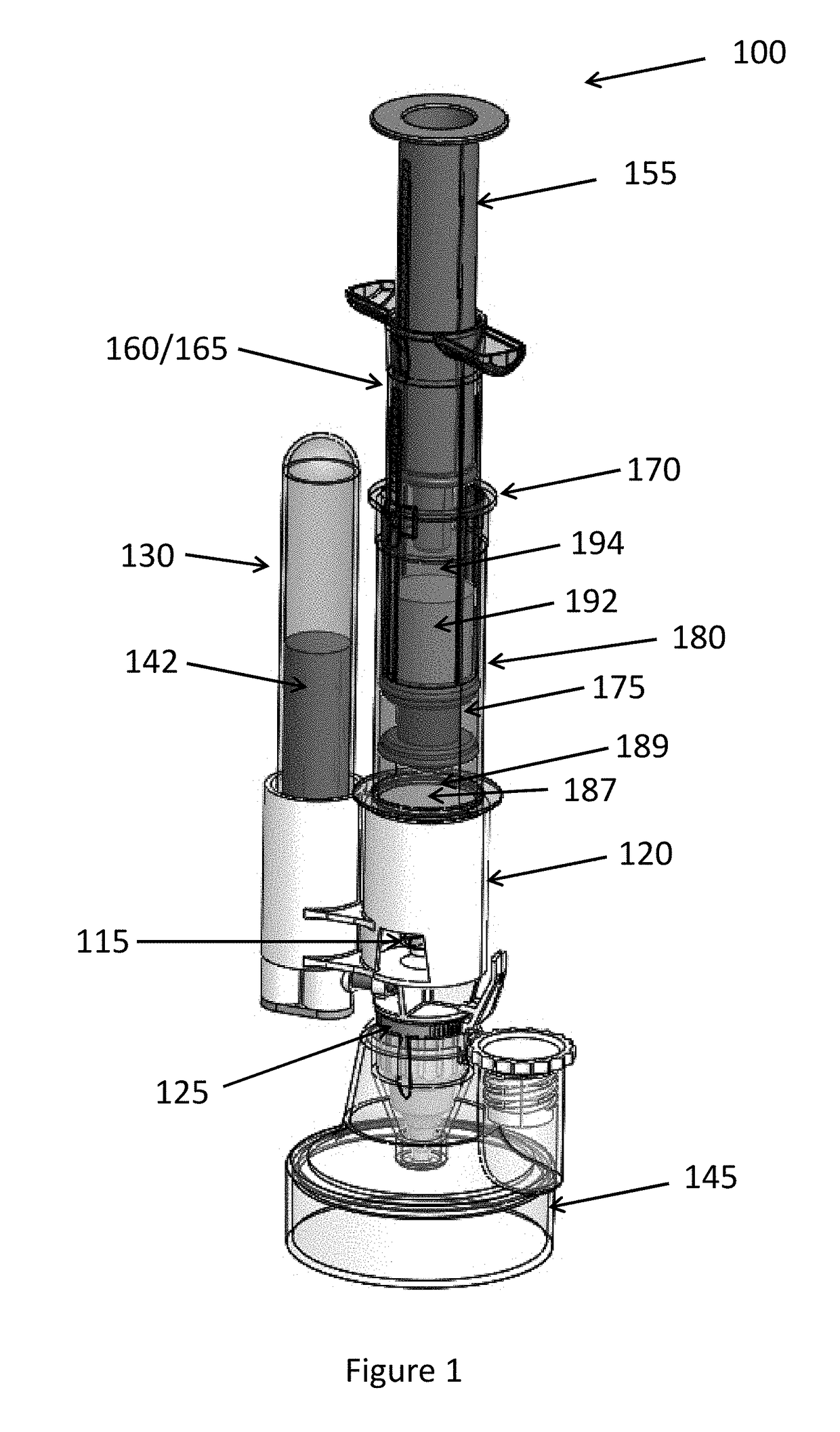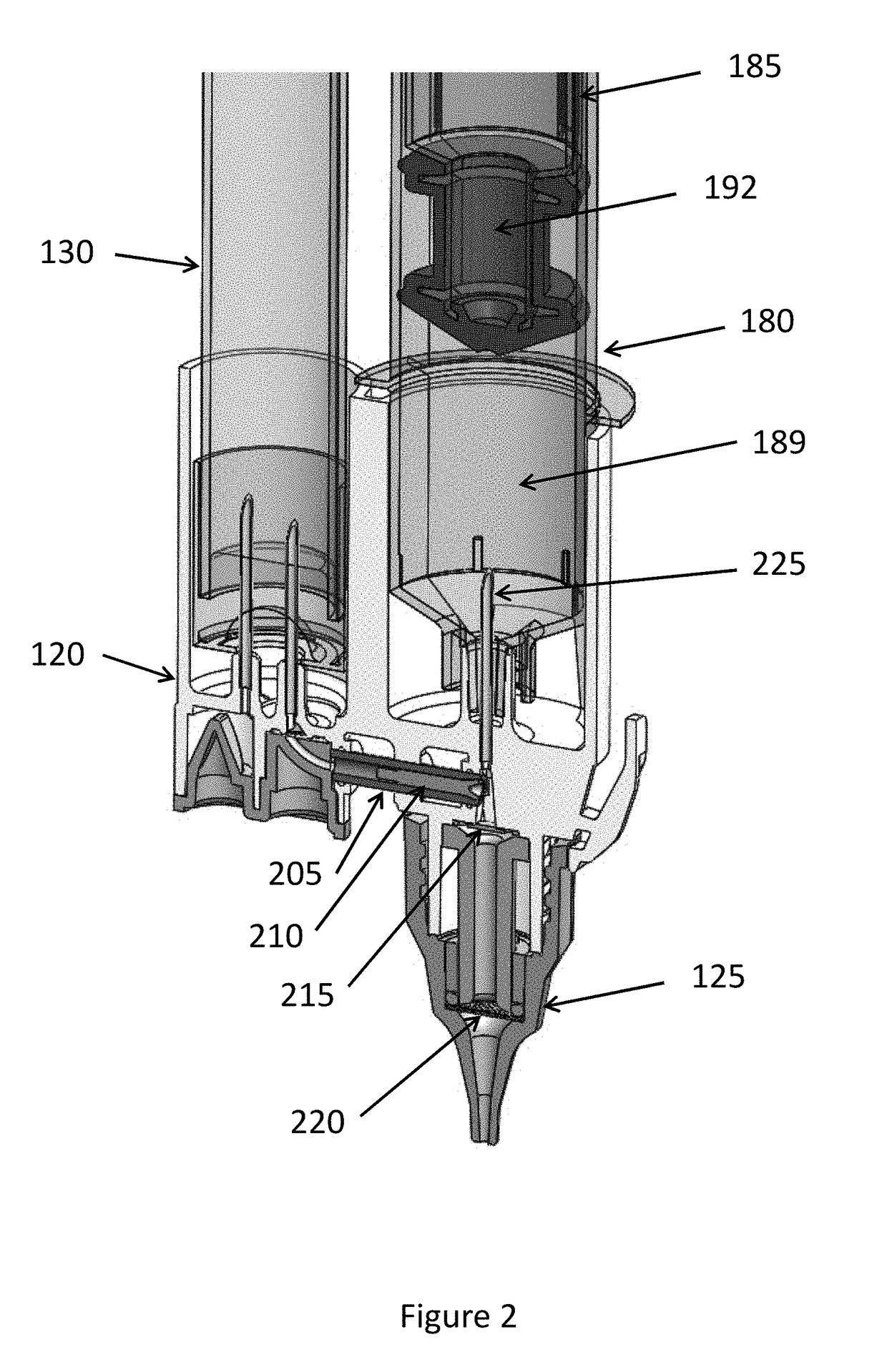Apparatus and method for extracting pathogens from biological samples
a biological sample and apparatus technology, applied in biochemistry apparatus and processes, laboratory glassware, instruments, etc., can solve the problems of inability to efficiently concentrate and retain microorganisms, inability to readily isolate and separate small quantities of pathogens, and slow collection methods of biological samples, etc., to prevent leakage, backflow, and/or undesired sample movement
- Summary
- Abstract
- Description
- Claims
- Application Information
AI Technical Summary
Benefits of technology
Problems solved by technology
Method used
Image
Examples
example 3
[0044 is directed to the apparatus of example 2, wherein the valve body further comprises a piercing member configured to pierce the puncture-able separator to thereby access the second reagent.
[0045]Example 4 is directed to the apparatus of example 3, wherein the piercing member is configured to enter the second reservoir when the outer syringe, containing the first reagent, is nearly fully displaced, and the first reservoir is substantially empty.
[0046]Example 5 is directed to the apparatus of example 4, wherein the first and second reservoirs are separated by an elastomer diaphragm.
example 6
[0047 is directed to the apparatus of example 2, wherein the valve body further comprises at least one inlet piercing member, the inlet piercing member configured to couple through the one-way valve to the sample tube.
[0048]Example 7 is directed to the apparatus of example 2, wherein the valve body further comprises a first and a second piercing members configured to enter the sample tube, the first piercing member to fluidically couple to the channel, the second piercing member to fluidically communicate with the ambient.
example 8
[0049 is directed to the apparatus of example 7, wherein the second piercing member further comprises a one-way valve to allow ingress of ambient air into the sample tube.
[0050]Example 9 is directed to the apparatus of example 1, further comprising a capture tube to removably connect to the valve body, the capture tube having at least one filter membrane configured such that all fluids exiting the valve body pass through the at least one membrane.
[0051]Example 10 is directed to the apparatus of example 1, wherein the first one-way valve opens under a relative negative pressure on the syringe side of the valve and closes under a relative positive pressure on the syringe side of the valve.
[0052]Example 11 is directed to the apparatus of example 1, wherein the second one-way valve opens under a relative positive pressure on the syringe side of the valve, and closes under a relative negative pressure on the syringe side of the valve.
[0053]Example 12 is directed to a method to hermetical...
PUM
| Property | Measurement | Unit |
|---|---|---|
| pressure | aaaaa | aaaaa |
| external pressure | aaaaa | aaaaa |
| area | aaaaa | aaaaa |
Abstract
Description
Claims
Application Information
 Login to View More
Login to View More - R&D
- Intellectual Property
- Life Sciences
- Materials
- Tech Scout
- Unparalleled Data Quality
- Higher Quality Content
- 60% Fewer Hallucinations
Browse by: Latest US Patents, China's latest patents, Technical Efficacy Thesaurus, Application Domain, Technology Topic, Popular Technical Reports.
© 2025 PatSnap. All rights reserved.Legal|Privacy policy|Modern Slavery Act Transparency Statement|Sitemap|About US| Contact US: help@patsnap.com



